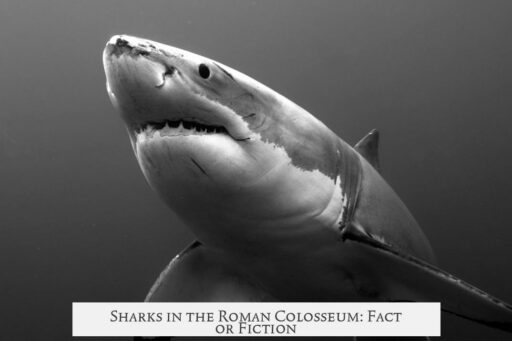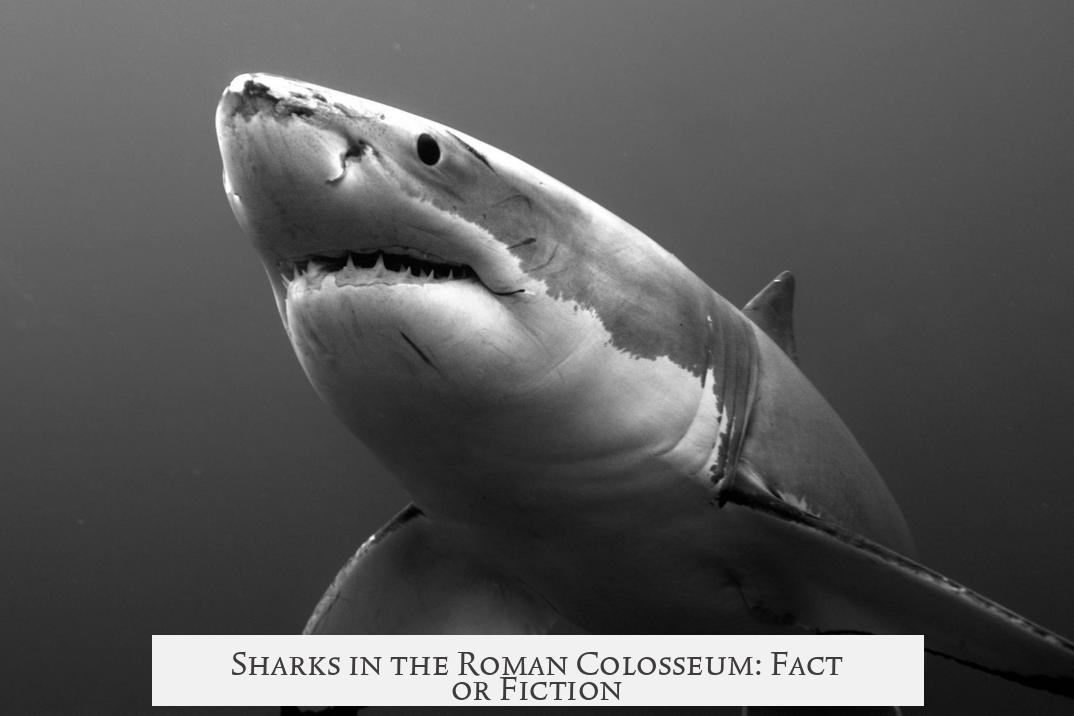Sharks never inhabited the Roman Colosseum. Despite popular myths, there is no historical evidence that sharks swam in this iconic amphitheater. Romans staged elaborate spectacles, including simulated naval battles called naumachiae, but these did not involve large marine predators like sharks.
The Romans were skilled engineers. They could flood the Colosseum floor using complex plumbing and drainage systems. This allowed them to recreate small-scale sea battles with boats. However, the idea of maintaining a large marine ecosystem with sharks is unfeasible. Transporting and keeping sharks alive in the arena would pose extreme difficulties.
Historical and literary sources firmly contradict the shark myth. Renowned Roman writers such as Suetonius and Cassius Dio document many exotic animals used in the games. Lions, tigers, bears, and other creatures appear frequently. Sharks do not feature in these records. There are detailed accounts of animal hunts and spectacles but no mention of sharks.
The logistical challenges reinforce this conclusion. Sharks require saltwater conditions and a stable environment. The Colosseum’s flooding was temporary and shallow, not a full aquatic habitat. Providing enough water and food for sharks was impossible given the technology and resources of the time.
Modern pop culture has amplified the myth of sharks in the Colosseum. Movies and online rumors suggest dramatic scenes of shark battles, but these are fictional. Roman naumachiae were impressive but limited to small vessels and calm waters without large predators.
- Romans could flood the Colosseum to stage mock naval battles.
- There is no evidence of sharks ever being present in the arena.
- Historical records list many wild animals, but sharks are absent.
- Keeping sharks alive in the Colosseum was impractical and unlikely.
- The shark-Colosseum myth stems from modern fiction, not ancient facts.
Sharks in the Roman Colosseum? Let’s Dive into the Truth!
So, were there really sharks swimming around in the Roman Colosseum during gladiator games or mock naval battles? The quick answer: absolutely not. While the thought makes for an intense blockbuster scene, historians and archaeologists agree that sharks in the Colosseum are nothing more than a modern myth. Let’s unpack why this idea sinks fast when faced with the facts.
The notion that ancient Romans stocked the Colosseum with live sharks is tempting—but it’s purely a product of Hollywood imagination and popular internet rumors. You’re right to be skeptical—there’s no credible historical evidence of sharks swimming around the Colosseum. Despite the legendary status of Rome’s gladiatorial spectacles, no documents or physical evidence suggest that sharks ever patrolled the arena’s watery floors.
Now, Romans were master engineers—no question about that. They occasionally staged naumachiae, or mock sea battles, which involved flooding arenas to host thrilling naval reenactments. This was an astonishing feat of plumbing and architecture, especially given the technology of the era. The arena could be rapidly filled and drained, thanks to an intricate system of aqueducts, pumps, and channels.
But here’s the catch: these battle simulations involved small-scale ships and combatants, not an entire ocean ecosystem. The Romans managed to flood the arena mainly for dramatic effect, not to keep live marine predators like sharks lounging in the water for spectators’ entertainment. Smaller watercraft stood in for mighty warships, creating an incredible spectacle without the chaos of having actual sharks on scene. Makes sense, right?
Speaking of sharks, let’s talk about practical roadblocks. Transporting a large ocean predator such as a shark into the heart of Rome would have been a logistical nightmare. Sharks are massive, delicate creatures used to wide-open sea spaces, and they require constant saltwater flow and carefully maintained conditions to survive. The technology to safely move and sustain sharks in captivity simply didn’t exist in Roman times.
Imagine trying to truck a shark over ancient Roman roads—or even by boat up the Tiber River—only for it to survive the trip. Once in the Colosseum arena, without a consistent supply of fresh seawater, sharks would quickly perish. Handling these apex predators would also pose a serious threat to the staff and animals involved in the spectacles. So, practically and safely, it was never a viable option.
Diving deeper into Roman records, we find no literary or archaeological traces of sharks anywhere near these events. Not one mention in the writings of Suetonius, Cassius Dio, or other meticulous chroniclers of Roman games, where lions, tigers, elephants, and bears regularly made appearances. Animals that Roman elites and crowds expected were clearly documented, but sharks never got an invite.
This absence in the historical corpus is telling. Roman spectacles did feature exotic and dangerous animals, but sharks simply weren’t among them. Why? Because it wouldn’t have been practical, safe, or entertaining in the way Romans wanted. The arena was a place for human bravery and exotic displays, but that didn’t extend to summoning sea predators into an artificially flooded pit.
So, what about the tales we sometimes hear about sharks in the Colosseum? That’s where modern pop culture waters get murky. Movies, TV shows, and viral stories often love to dramatize history for shock value. The image of a gladiator battling a vicious shark underwater makes for salacious storytelling but strays far from reality.
If you’re a history buff or simply curious, it’s essential to separate fact from fiction in these waves of misinformation. The Romans were impressive, yes, but even they had limits when it came to aquatic entertainment. Mock naval battles did not involve real sharks, nor was the Colosseum their natural habitat.
In summary, while the idea of sharks in the Roman Colosseum sounds thrilling, it’s a myth without historical backing. The Romans did brilliantly flood the arena for mock battles. But the presence of large marine predators? That’s just Hollywood and internet rumor jumping into the water.
Have you ever wondered how ancient cultures wowed audiences without modern special effects? The Romans’ skilled engineering and theatrical ingenuity made do with water, animals, and lots of human drama. It’s pretty amazing what they pulled off with wooden ships floating on a flooded arena floor—no sharks required.
Next time you hear tales of sharks lurking beneath the Colosseum’s waters, you can confidently share the truth—and maybe enjoy a laugh over how much history benefits from a little creative exaggeration!




